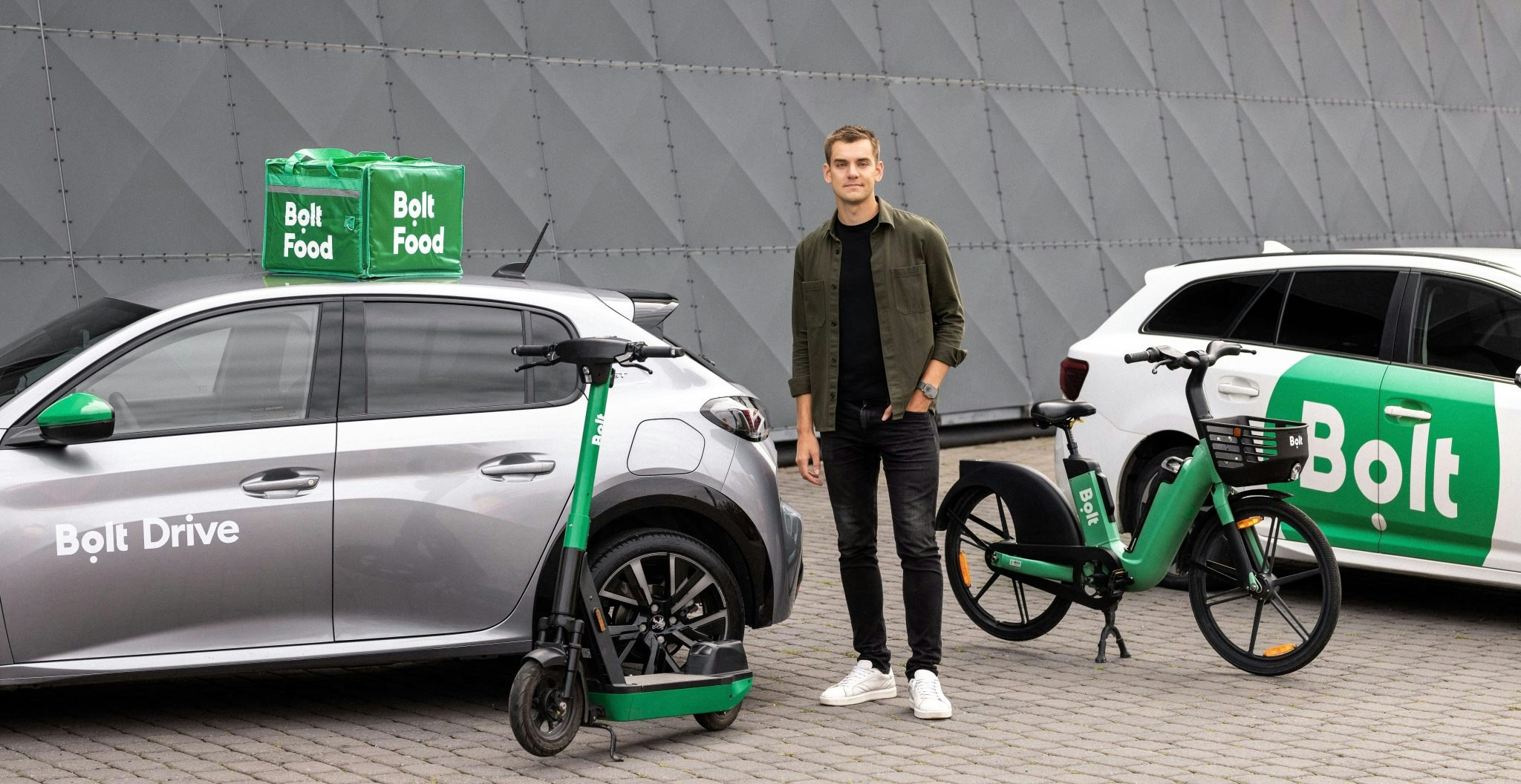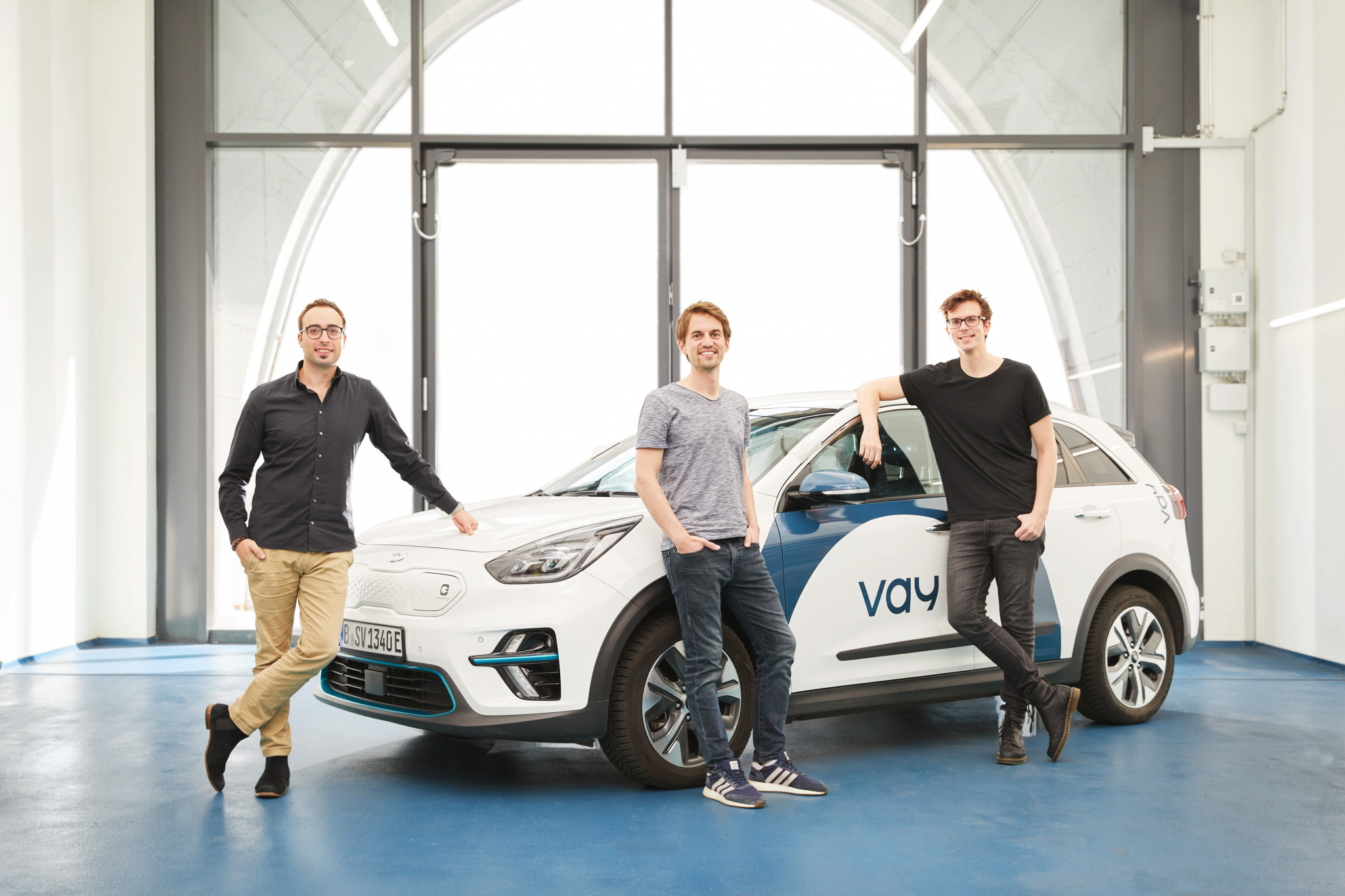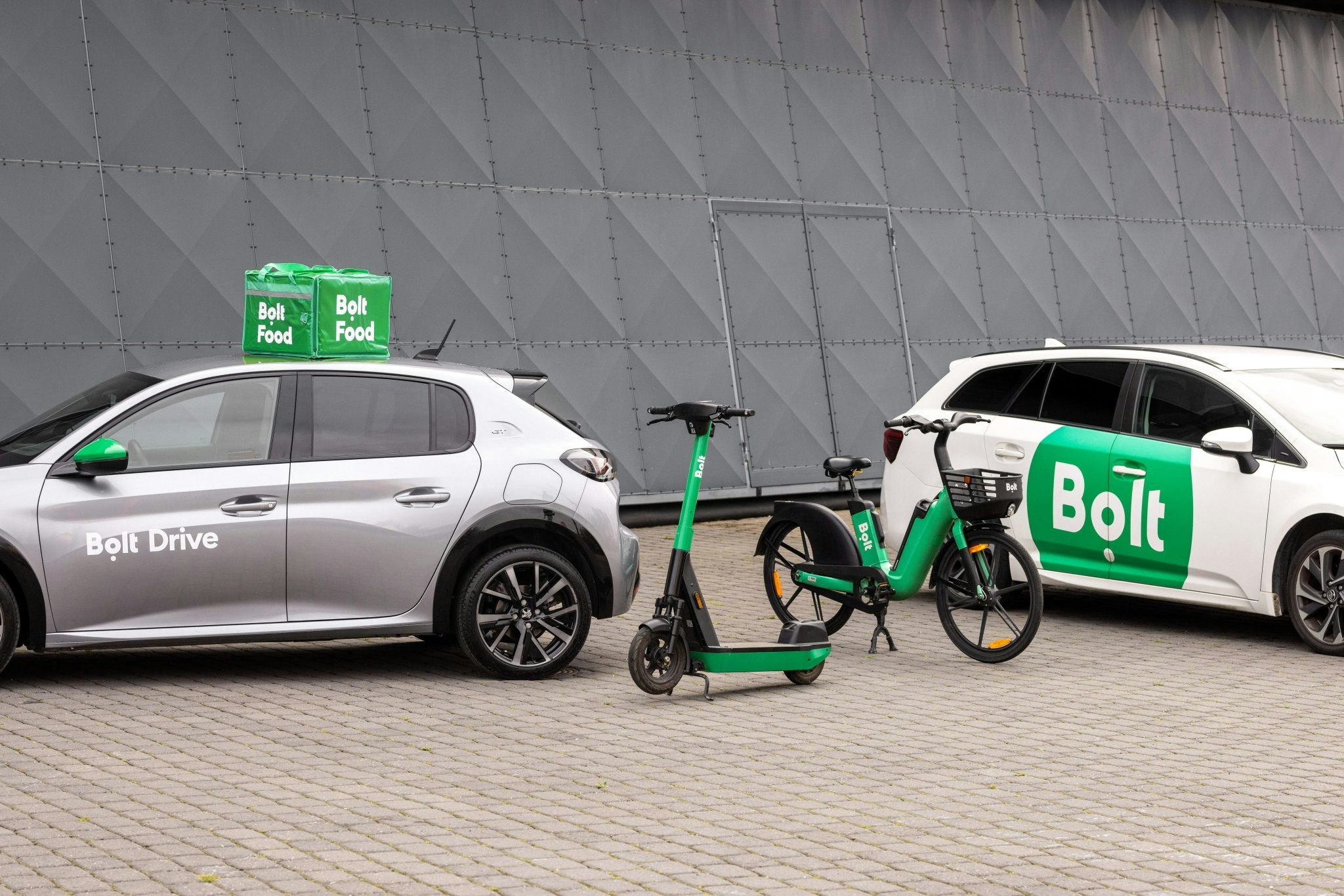Taking a cab in most big European cities today is a completely different — and far cheaper — experience than it was 15 years ago.
And it’s not just Uber we have to thank for that. Bolt, the ride-hailing startup from Tallinn, has, against the odds, developed into a serious competitor to the American mobility giant. Almost 12 years after being founded — by a 19 year old — Bolt is leading the ride-hailing race in 20 countries, a majority of those in Europe, and has recently announced that it expects to hit €2bn in revenue this year.
There’s still plenty of growth to unlock, in part thanks to new technology, the still youthful looking founder Markus Villig tells Sifted. “Self-driving cars are going to be absolutely fantastic for ride-hailing networks. I think they’ll grow our business tenfold, maybe even a hundredfold.”
Bolt now operates in over 50 countries and 600 cities and offers dozens of services, ranging from micromobility rentals to food delivery. However, it still trails Uber, which spans 71 countries and 10,500 cities with a reported revenue of $37bn in 2023 — and it is also gearing up for the self-driving revolution.
Yet Villig doesn’t seem concerned about the competition, noting that the market has consolidated significantly over the years, shrinking from around 100 players to just a few contenders.
“There's a handful of very strong platforms left and everybody has sort of carved out their part of the world that they're doubling down on. For us, that's Europe and Africa,” he says.
The self-driving revolution
But it’s not in Europe (or Africa) where robotaxis will take the lead.
In the US, robotaxi company Waymo is already completing 150k self-driving trips a week. Uber, the leading ride-hailing app in the US, is planning to bring autonomous ride-hailing to Austin and Atlanta with Waymo early next year. It has also recently made a strategic investment in London-based self-driving tech startup Wayve to integrate its technology into its cars.
And with President-elect Donald Trump proposing to ease regulations on self-driving cars — pushed by Tesla founder Elon Musk — the sector is likely to accelerate further across the pond.
Europe will likely move more slowly, Villig says.
“Most US cities have a relatively simple, rigid grid versus the sort of mess that most European cities are — having grown organically over centuries. It's technically easier for the cars to operate in the US,” he says.
“Second, in a lot of US cities, labour costs are higher compared to many European cities where driver salaries are relatively lower. Therefore, it’s much tougher for the unit economics of these robotaxis to be competitive [in Europe]. Regulation is only the third element.”
Despite all that, Villig is optimistic about self-driving cars. In 2020, Bolt partnered with the University of Tartu in Estonia on a self-driving research project aimed at integrating autonomous vehicles into Bolt’s platform by 2026.
“Most people don't yet understand that this will be absolutely fantastic for ride-hailing networks. It's one thing to build the technology, like software and sensors, to run a robotaxi — it's a very different thing to operate them at scale,” Villig says.
The challenges facing the companies making self-driving cars include mass production, financing, insuring, cleaning, charging and managing regulations. They’ll also have to contend with things like customer support and payment collection across multiple countries — services ride-hailing companies are already experts at.
“It's going to be a huge mess,” he says — but one that opens up many partnership opportunities for the ride-hailing giants.
Villig says there are about 10 credible self-driving car companies globally, and Bolt is open to working with all of them.
“We want to build the best platform for them so that if any of them wants to bring their cars to market, they would know that Bolt is the best platform in Europe to do that together. We already have 10 years of experience operating these networks at scale, and we're building even more skills over time.”
Moving towards profitability
In its first four years, Bolt was more or less bootstrapped. In 2018, it raised $175m at a $1bn valuation and has since raised capital annually. Its most recent equity round in January 2022 brought in €628m from investors including Sequoia, Fidelity Investments, G Squared and Blue Owl Capital, valuing Bolt at €7.4bn. Villig retains a 16.7% stake, according to the Estonian business register.
Following that first big fundraise in 2018, Bolt shifted from focusing on break-even to prioritising growth. But in 2022, as the financial crisis gripped the startup scene, Bolt pivoted back to profitability — and has kept its 4,000-strong employee pool steady for the last couple of years, says Villig.
“[In 2022] we went from around €250m burn to nearly break even last year. This year’s results aren’t out yet, so I can’t comment on the details, but you can derive the trajectory from there,” he adds.
In May 2023, Villig told Reuters that Bolt was preparing for an IPO in 2025. Earlier this year, the startup secured a €220m revolving credit facility from eight lenders, including Goldman Sachs, JP Morgan and Deutsche Bank.
Villig tells Sifted he’s in no hurry to IPO — but is laying the groundwork, while continuing to focus on growing in Europe and Africa.
“Over the last two years, there’s barely been any tech IPOs. So from that point of view, we’re in no rush to do it [IPO], and the company is in a great place financially,” he says, adding: “Any company would appreciate more access to capital. You never know when new opportunities arise, so it’s good to have that [preparation] in place rather than try to put it together at the last minute.”
Consolidation in the European micromobility market
Bolt’s products span scooter and car rental services to food and grocery delivery and corporate mobility services. However, it’s still Bolt’s ride-hailing service which brings in the most money. In 2023, over 80% of Bolt’s revenue came from ride-hailing services, according to its annual report; its micromobility offering — e-bikes and e-scooters — contributed only 9% of revenue. It is also only available in 25 of the countries in which Bolt operates.
The European micromobility market has consolidated over the last few years, with Tier and Dott merging in January and US-based Bird leaving Europe when it filed for bankruptcy in 2023. The main micromobility startups still active in Europe are US-based Lime, Swedish Voi, Dutch Dott and Bolt.
“There are now about five players left in Europe, and we think it’s probably going to consolidate further — five is still unsustainable,” Villig says.
But don’t expect Bolt to go on an acquisition spree.
“We have our eyes open, but we have a very high bar for M&A and we haven't done a single competitive deal in our 10-year history. So there needs to be something really special,” he says.
“Micromobility is a horrible business. The sector is very small, and if you sum up the profits of all these companies, everybody’s losing money. It’s a very, very difficult sector.”

Cities like Berlin, Barcelona and Brussels have tightened regulations on e-scooters, forcing micromobility startups to pay higher fees and go through tender processes for operating permits. Some cities, like Paris, have banned rental scooters altogether; at its peak, the city had more than 20,000 scooters operated by 12 companies.
“Over the last year, more regulations have come in, with some cities demanding very high fees from these operators. I think many cities are suffocating and killing the sector,” Villig says.
Bolt has almost 50 employees working on regulations in a lobbying capacity, which Villig says is what this industry requires — both for ride-hailing and e-scooters.
“You have scooter tenders with every city running their own legislation and which hardware they're going to allow. That takes a lot of time, and then the ride-sharing regulations and all these other things in Brussels. It's a huge effort to educate people about these new forms of transportation. Hopefully, they're going to see it our way and update the regulations over time,” Villig says.
That’s also part of the reason why Bolt persists with its micromobility products.
“It’s much better for people to use scooters and bikes for short rides than to take every trip in a car. Long term, we think that’s going to play a big role in our ecosystem. There’s a huge overlap of people using all these products, and we proactively push people to use scooters. But as an independent scooter operator today in Europe, I honestly don’t see where those companies are going to end up. They need to consolidate.”




